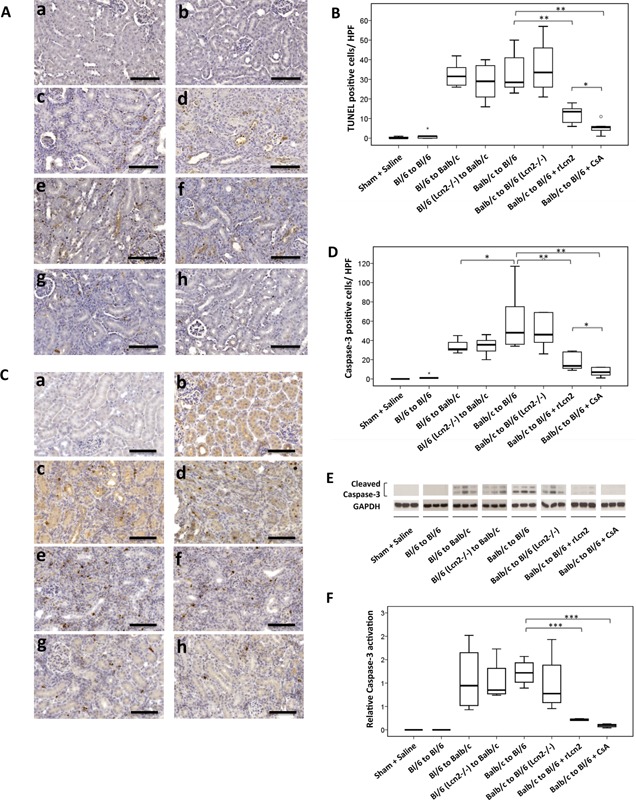Figure 5.

Recombinant lipocalin 2:siderophore:Fe complex (rLcn2) protects mouse kidney allografts from transplantation‐induced apoptosis. Cell death in the C57Bl/6 (Bl/6) isografts, Balb/c kidney allografts transplanted into Bl/6 recipients, and Bl/6 allografts transplanted into Balb/c recipients was determined at posttransplant day 7 by terminal transferase‐mediated dUTP nick end labeling (TUNEL) staining (A, B) for DNA fragmentation and by immunohistochemical analysis (C, D) and immunoblotting (E, F) for caspase 3 activation. Representative images of the TUNEL (A) and activated caspase 3 (C) stained sections of kidneys harvested from sham‐operated mice (a), Bl/6 kidney isografts (b), Bl/6 allografts in Balb/c recipients (c), Bl/6 Lcn2−/− allografts in Balb/c recipients (d), and Balb/c allografts in Bl/6 WT (e) and Lcn2−/− (f) recipients and the Bl/6 WT recipients treated with rLcn2 (250 μg perioperatively) (g) or cyclosporine A (10 mg/kg body weight, daily) (h) are shown (A, C). Quantification of the TUNEL (B) and activated caspase 3 (D)–positive cells per high‐power field are presented by box plots. (E, F) Total kidney lysates of the indicated groups were used to determine activation (cleavage) of caspase 3 by immunoblotting. Representative immunoblots of three animals in each group are shown (E). Relative activation of caspase 3 was determined using glyceraldehyde 3‐phosphate dehydrogenase as a loading control and is presented by a box plot (F). Scale bars = 100 μm. n = 6. *p < 0.05, **p < 0.01, ***p < 0.001.
